DJI FPV drone
The DJI FPV is a new take on the 'First Person View' drone – and it's a pretty exciting one if you've ever fancied feeling what it's like to be an eagle or an X-Wing pilot.
FPV drones give you a pilot's-eye view from the aircraft thanks to the combination of a pair of video goggles and a low-latency feed from the drone's camera, which the DJI FPV delivers via the bundled DJI Goggles V2 and the latest version of its Ocusync video transmission tech (called O3).
But the DJI FPV also differs from traditional FPV drones in a few ways. This style of drone is traditionally associated with super-light homemade aircraft and drone racing, a growing sport that has its own professional leagues and world championships.
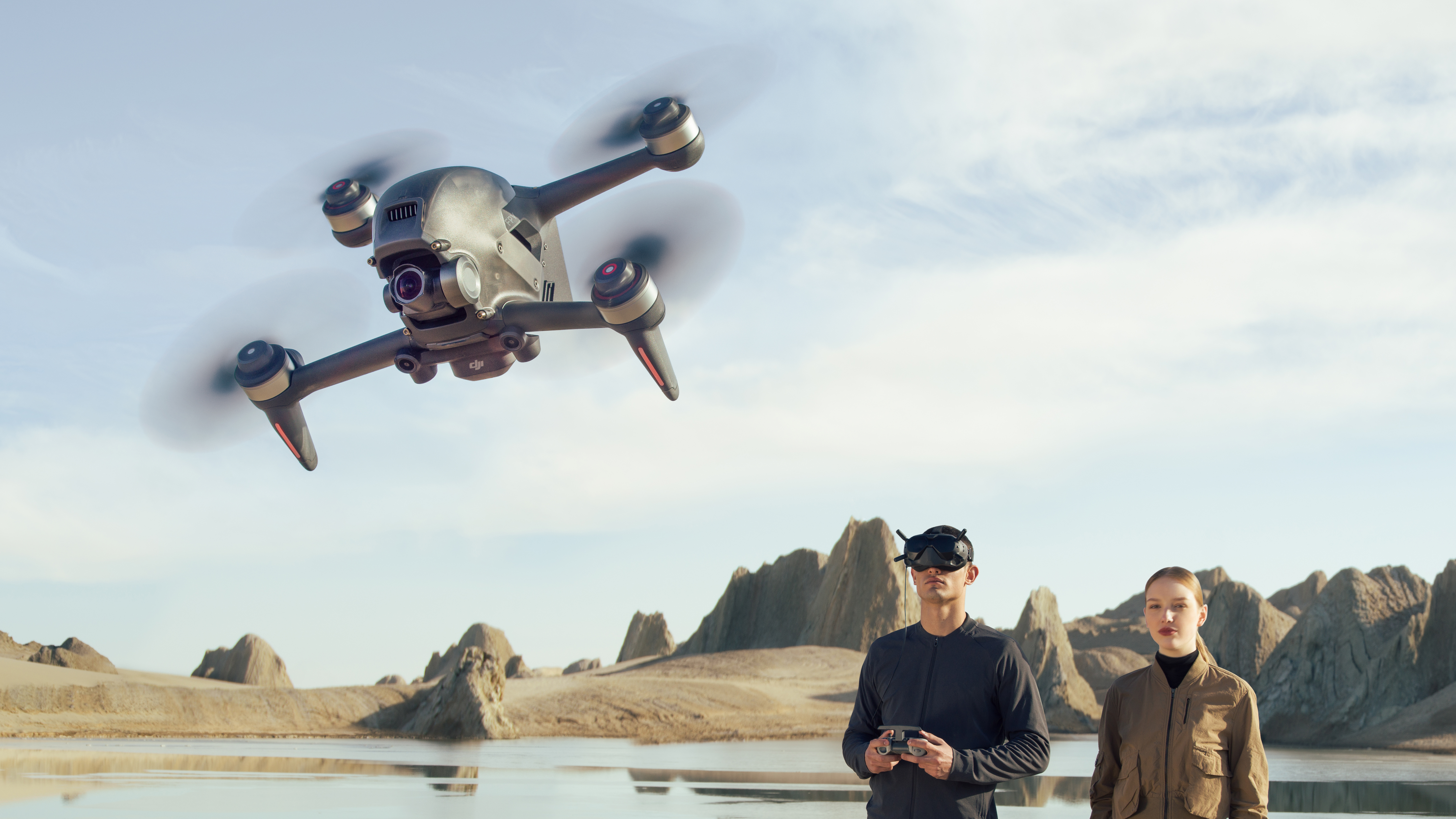
The DJI FPV aims to be a little more polished and beginner-friendly than those kinds of drones, as well as being an exciting new cinematic tool. DJI's other drones, like the DJI Mavic Air 2, are essentially sky-based 4K cameras, and the DJI FPV has similar aspirations thanks to its combination of a 4K/60p camera and Rocksteady image stabilization.
Aside from the DJI FPV's bundled video goggles (which mean you can legally can only fly it when accompanied by a 'spotter' assistant), the big difference between this drone and DJI's Mavic series is its sheer speed and acceleration. With a max speed of 87mph (compared to the DJI Mavic Air 2's 42mph) and the ability to go from 0-62mph in only two seconds, the DJI FPV is capable of shooting some high-octane, WipEout-style footage.
But what's it like to go hands-on with it? We unboxed the new drone and donned the DJI Goggles V2 in advance of our full DJI FPV review, which we'll publish after we've had more flight time. Here's what we think of the experience so far.
DJI FPV release date and price
You can buy the DJI FPV right now in a standard bundle, along with various optional accessories. The standard DJI FPV Combo pack includes the drone, remote controller, DJI FPV Goggles V2 and one battery for $1,299 / £1,249 (around AU$2,240).
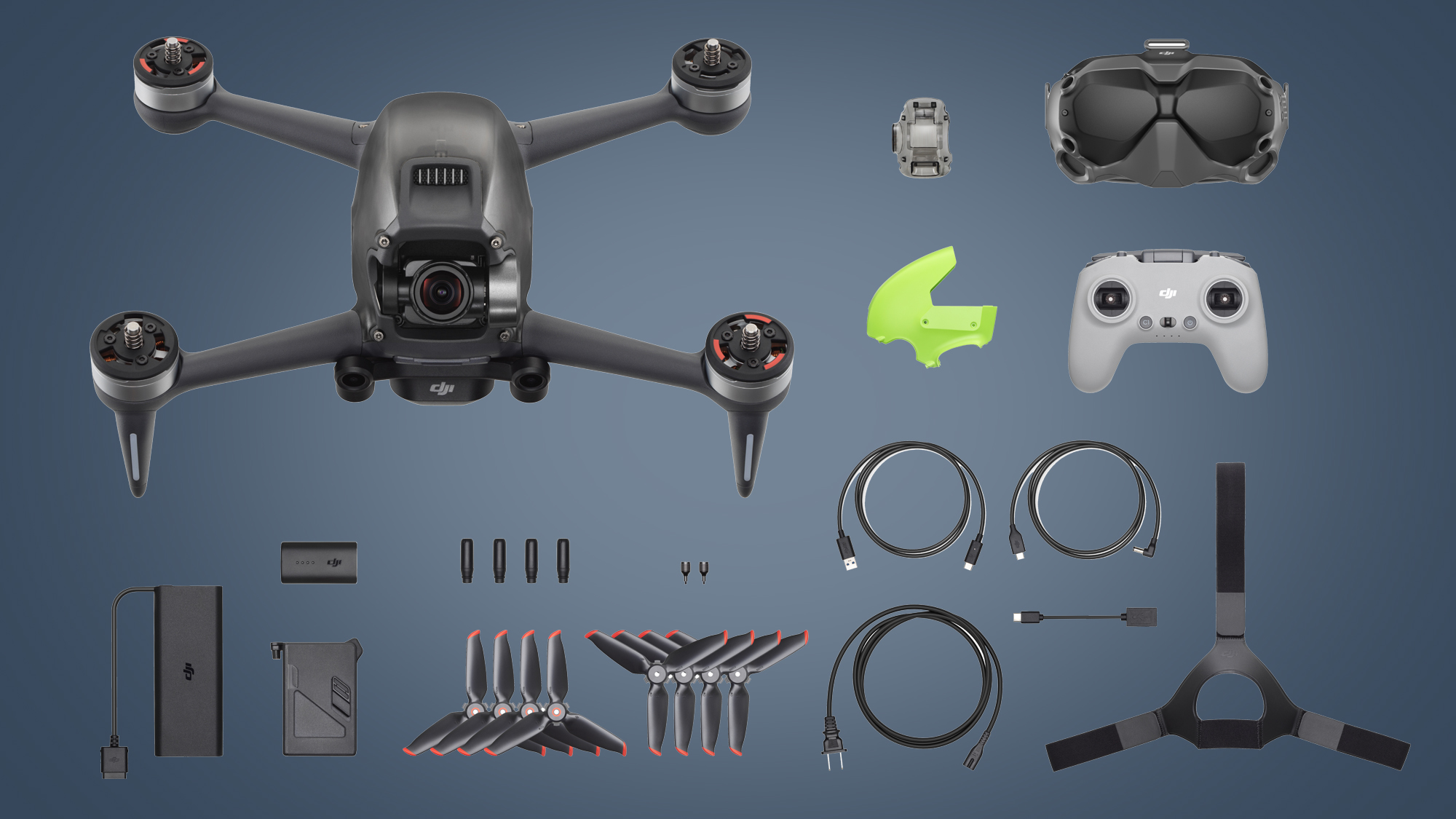
DJI is also offering a Fly More Kit, although this one differs from its usual Fly More bundles. Rather than being a pricier bundle that includes the drone and some extra batteries, it simply lets you buy two extra batteries and a dedicated charging hub for $299 / £259 (around AU$465).
There's also the optional Motion Controller, which steers the drone based on the movements of your hand, and which you can buy separately for $199 / £139 (around AU$25-).
This all adds up to quite an investment compared to the more affordable models in the existing Mavic series – but then the DJI FPV offers a flying experience that's quite unlike any other drone, and we think it offers pretty reasonable value considering that the DJI FPV Goggles V2 are included.
Design and setup
The DJI FPV Drone
This DJI drone doesn't fold like the popular Mavic series, but it remains compact. It's a bit bigger than an unfolded DJI Mavic Air 2 judging from a side-by-side comparison of the two drones. There's more horsepower and a larger battery, which extends this drone's girth, but the actual wingspan won't shock you, and that's important.
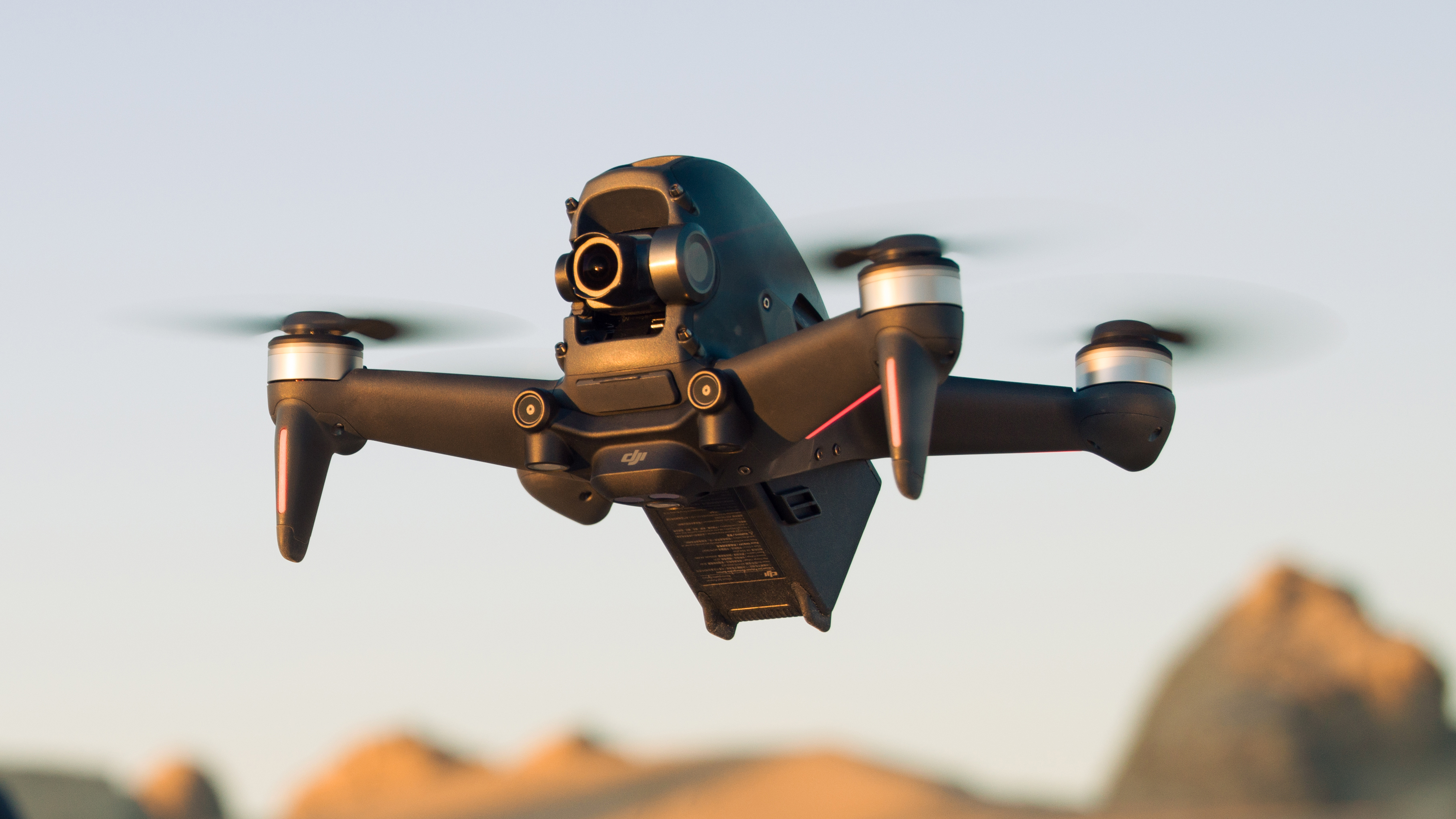
You will, however, have to register this drone in most countries. It weighs 795g and feels heavy, far heavier than the DJI Mini 2's purposeful weight of 249g (1g under the legal limit that requires registration by many government agencies). Only the Mavic 2 Pro (970g) and Mavic 2 Zoom (905g) are heavier among DJI's consumer drones.
The 4K 60fps camera feels secure in the nose of this drone. It has a single-axis tilt for stabilization rather than the 3-axis gimbals we see on the cinematic-focused Mavic series. This drone is meant for racing ahead and keeping things stabilized, with DJI's RockSteady electronic image stabilization and an ultra-wide 150 degree field of view.
Here's what's different about its overall construction compared to many other hobbyist racing drones: installation and setup is so easy out of the box. You can get this thing up and running within minutes with minimal technical know-how. We saw similar simple-to-fly advantages in the performance, so DJI certainly wins on ease-of-use.
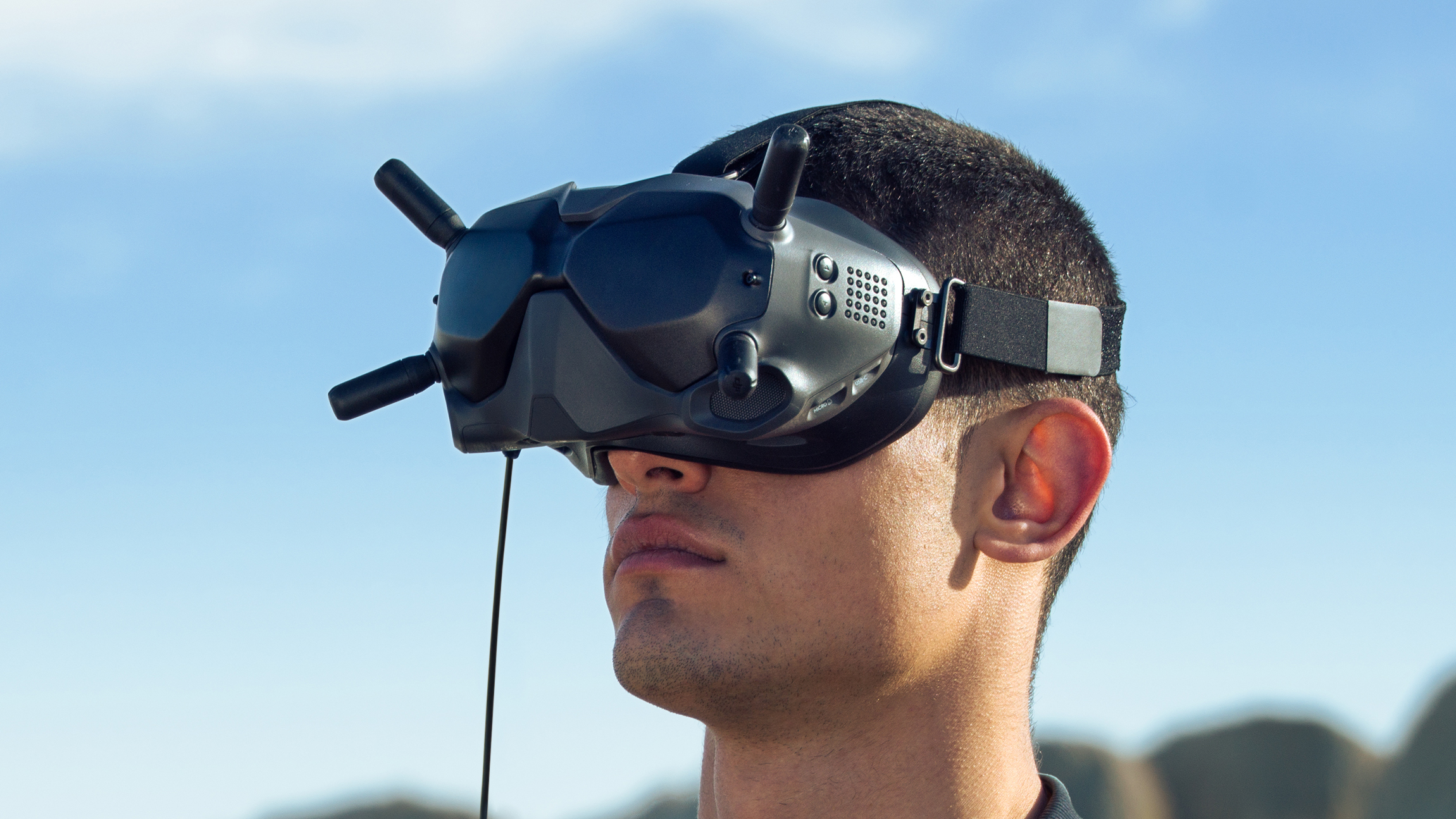
DJI FPV Goggles V2
"Take me to your leader!" That's what we said when we put together the DJI FPV Goggles V2 by installing four small coaxial-connected antennas that stick out of the VR-like headset. And it's kind of fitting: the experience is out of this world for first time racing drone flyers.
The actual FPV Goggles V2 design isn't too different from what we found in V1 back in 2019. The Live View mode now supports a resolution of 810p (up from 720p), the refresh rate is boosted to 144Hz, and you have support for 2.4GHz in addition to 5GHz.
Included is a small USB-C battery pack, like any portable charger, that powers this headset. It's a bit awkward to have a battery pack hanging from your goggles, but at least you'll be so immersed in FPV drone flying and won't be able to see anyone's reaction to you wearing this contraption.
We also found some sunlight can get in on the sides of the goggles (a very common problem with VR headsets), so we had to adjust the straps to make sure that it didn't distract from the experience.
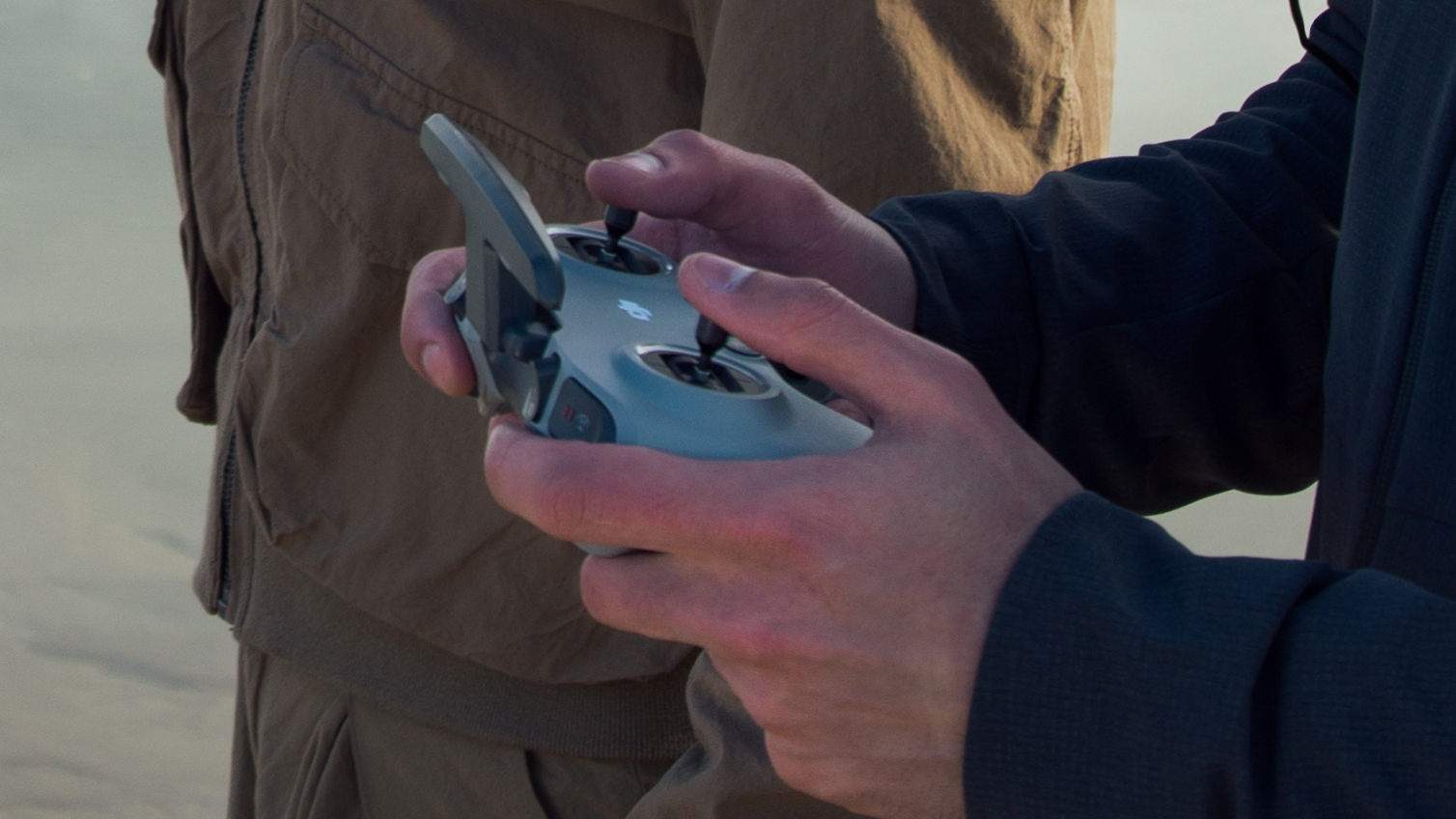
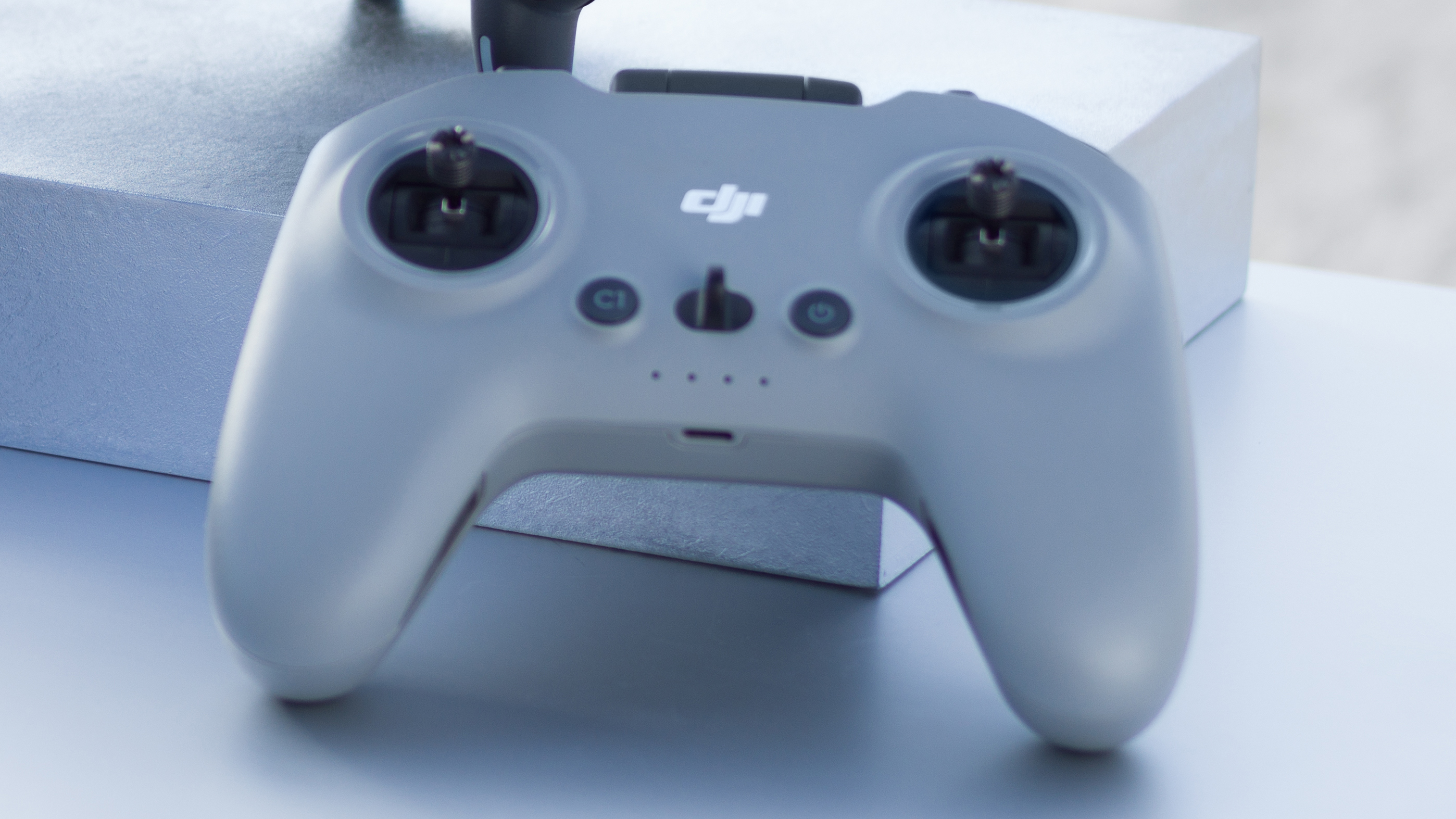
DJI FPV Remote Controller
The new controller resembles the design of the DJI Mavic Air 2 and Mini 2 controller, but it's been tweaked to fit the needs of a fast-paced FPV drone. There are handles now, so this appropriately looks a video game controller.
A few buttons moved to the controller's shoulders – return to home (RTH) is now the left shoulder button, and switching between flight modes (normal, sport and manual) is done with a rocker button on the left side. The right shoulder has a new start and stop button to apply the emergency brakes.
There's no spot for your phone at the top of this controller for obvious reasons (you have a headset on). That area is instead dedicated to an oversized antenna. If there's one thing this drone package has it's a lot of antennas to keep video transmissions and controls silky smooth. At more than 60mph, that begins to matter a lot.
Performance
There are two things we're judging the DJI FPV on when it comes to performance: its ability to nimbly fly compared to other racing drones, and the quality of the video.
We need more flight time with this drone outside of New York City to properly test its true speed and aerodynamics. But what we can tell you is that this drone is fast – 0 to 62mph in two seconds with a max speed of 87mph means it runs circles around any Mavic we've tested before.

There are obstacle avoidance sensors onboard in the front and on the bottom, but the front sensors are only active in normal flight mode (not sport and manual), and the bottom sensors are meant to detect ground.
At such fast speeds, sensors won't help anyway. Hit a tree at 80mph and you may wreck this drone. The package we got contains an extra shell (in easy-to-spot green) and replacement propellers, which may come in handy as we continue to test. The good news is this drone feels solidly built so it may take some bumps.
Compared to many hobbyist drones, the DJI FPV takes an easy win with 4K 60fps video quality recording at 120Mbps. This isn't meant to be a cinematic drone, but it's no slouch as long as you enjoy the very wide 150 degree field of view.
But the real performance winner here is DJI's low-latency transmission from the drone camera to the Goggles being worn. When you have a rocket of a drone zipping through the air, latency means everything. This is something we have to test out more in-depth in the coming week at much higher speeds.
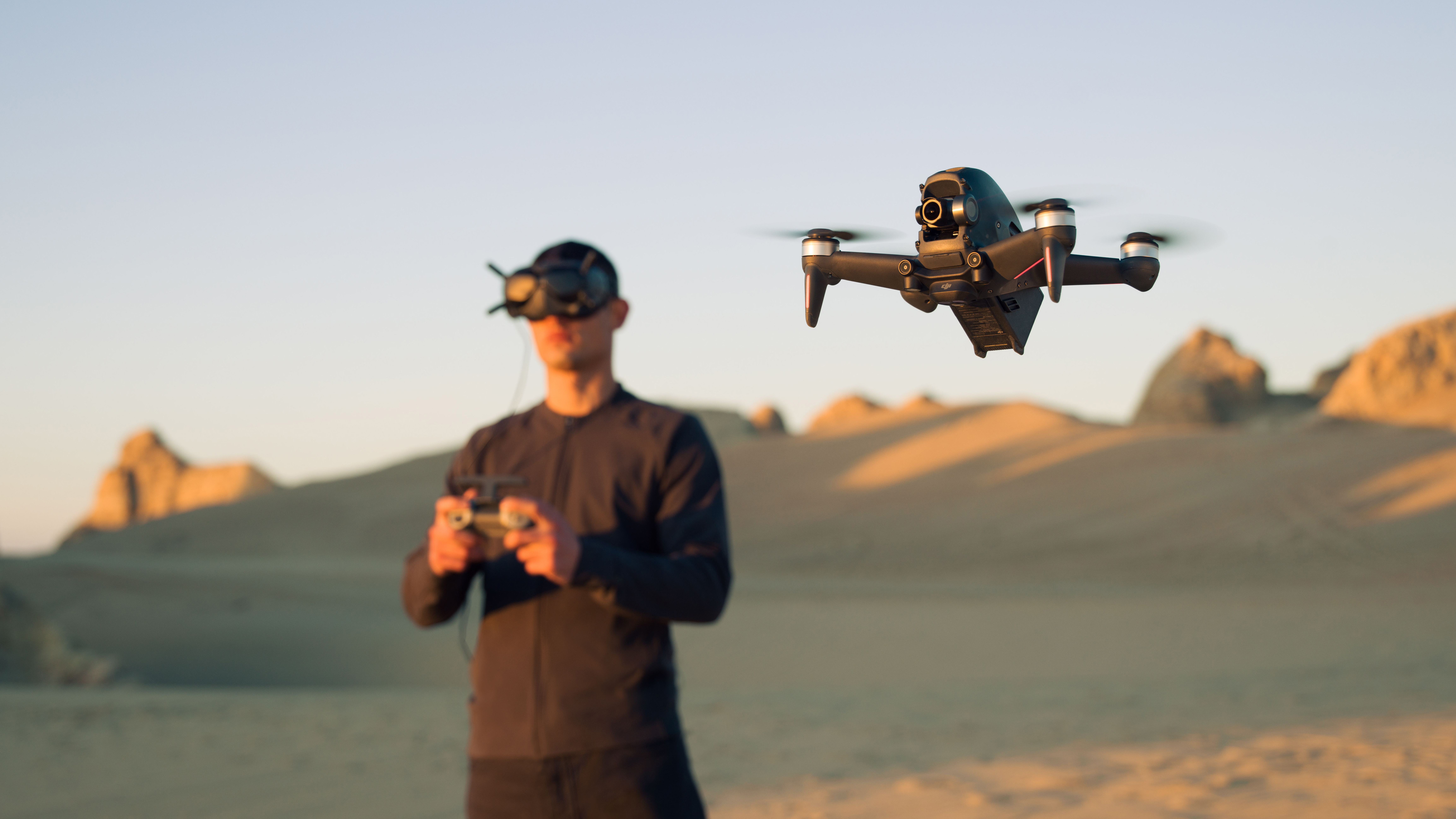
Early verdict
Flying the DJI FPV offers a surreal experience that takes what we already love about DJI's consumer drones – a solidly built quadcopter with superb video quality – to new top speeds. We're going to be testing it more in the weeks to come to get it to that 87mph maximum speed and come back with more 4K video footage.
What we can tell you right now is that the 4K 60fps cockpit view offers something fresh for drone enthusiasts who want a turnkey solution to a racing drone, rather than a brand new, time-consuming hobby.
The DJI FPV drone makes racing drones more accessible to a wider audience, but spending such a high price on the complete package means the idea is likely to remain with a niche audience.
0 comments:
Post a Comment